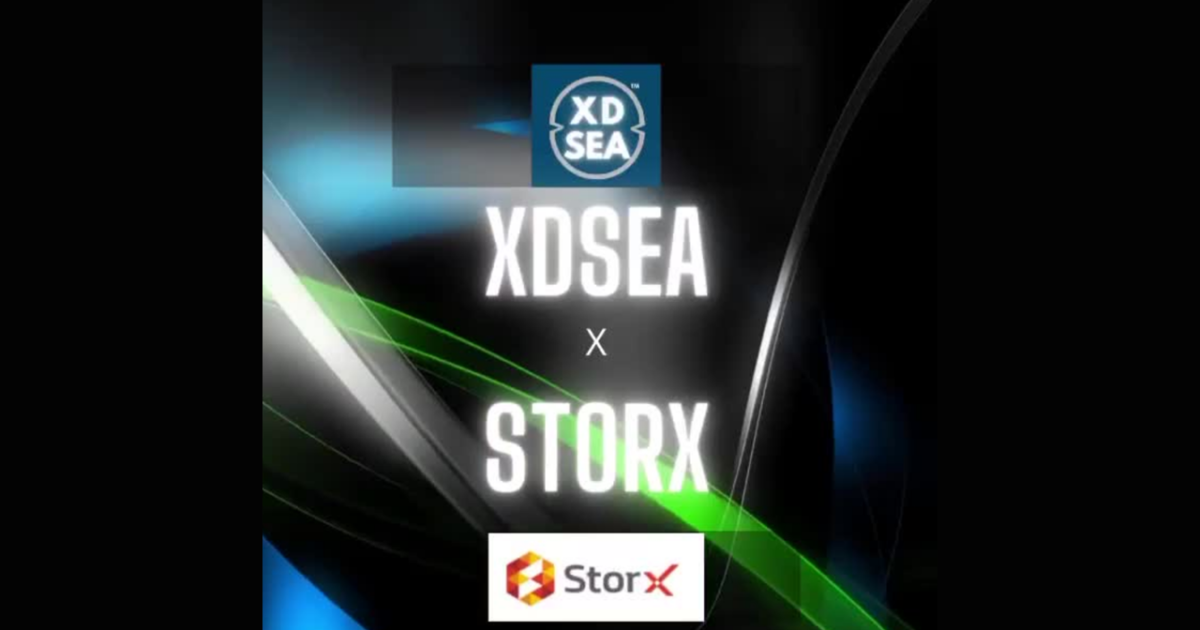Decentralized Storage Provider StorX Network has joined hands with NFT Marketplace XDSea on a partnership set to eliminate IPFS based centralized storage. Under the terms of the collaboration, it follows that XDSea will leverage StorX decentralized storage network as a store for their art, images, and documents.
We are thrilled to announce the Partnership between @StorXNetwork and @XDSeaNFT.
XDSea will use Storx decentralized storage network to store art, images, and documents. This will remove file storage centralized using ipfs.#StorX #SRX #partnership https://t.co/zfM7asYJaz— StorX Network (@StorXNetwork) March 3, 2022
Standing as the first-ever, and largest P2P decentralized marketplace in the world to provide an avenue for selling and buying NFTs, XDSea is built atop the XDC Network and runs on the XRC blockchain. The collaboration and expected offerings are a testament to the numerous promises made by DIMO and XinFin who hosted the official debut of the XDSea network. From being the first NFT marketplace to join the XRC blockchain, and now offering safer and more reliable storage for digital collectibles, the possibilities remain endless for XDSea.
Already XDSea is reputed for its game-changing role offering very affordable gas fees in the market today thanks to its association with XinFin. Beyond that, it also offers the lowest transaction fees in the market today. By meeting users at the junction linking gas fees, transaction fees and now security, XDC is a game-changer in an extremely agile and dynamic industry.
Competitive features of StorX Network’s Decentralized Cloud
StorX Network has revolutionized data storage, providing a blockchain-based decentralized cloud storage solution. This solution evades tracking, censorship, blocking, or the presence of any downtime whatsoever. With these offerings, StorX leads netizens to a safer and more secure internet version where decentralization is the theme. XDSea is the first among many who are poised to leverage this future.
With this partnership, XDSea intends to leverage StorX decentralized storage for the safe storage of NFTs in the range of art, images and documents; an action that will eliminate the centralization element of storing files characteristic of IPFS.
IPFS is basically the hard drive of blockchain with a specific approach for data storage. IPFS stores data in such a way that when data is added to the IPFS network, the network splits it into groups of 256Kb capacities. Each group is identifiable using a specific hash and is thereafter spread across multiple nodes on the hash-linked networks.
StorX is safer than IPFS
While both use transport encryption, StorX offers more security thanks to its content-encryption property. While user data is safer when being sent between individual IPFS nodes, that data is accessible to anyone who wishes to download and view it provided they have the CID. StorX enhances security by providing the content-encryption property.
Moreover, the XDSea will benefit from, among other privileges offered by StorX, the assurance of offering users a safer and more reliable storage network for their digital collectibles on the cloud. With this collaboration, XDSea, therefore, expects to deliver a safer and more unregulated storage experience for its esteemed user community so that they can design and develop their valuable NFTs on the open-source NFT Marketplace, XDSea.
Notably, the partnership makes for a notable milestone for StorX, positioning them as the first storage provider to collaborate with XDC NFT marketplace for purposes of solving their storage needs. The mechanics hold that every file that a user uploads on StorX is split into multiple parts before encryption into several fragments and finally stored within independent storage nodes. The nodes are run by different operators located in various parts of the world.
The hallmark of StorX network’s offering centers on the fact that the system is designed as a group of autonomous storage networks. This means that there is no one operator who holds total access to the data belonging to a single user. With different parts held by different operators, the amount of power or influence held by a single holder is therefore significantly reduced to an almost invaluable minimum, hence enhanced user security.
#XDCNFT are coming to the #XDCNetwork. It is still early days but new artists, fans and innovators are rapidly joining the #XDC community. Buckle up, this space is about to explode! pic.twitter.com/YjvilI4Nox
— PiusVirXDC (@PiusVir) March 21, 2022




